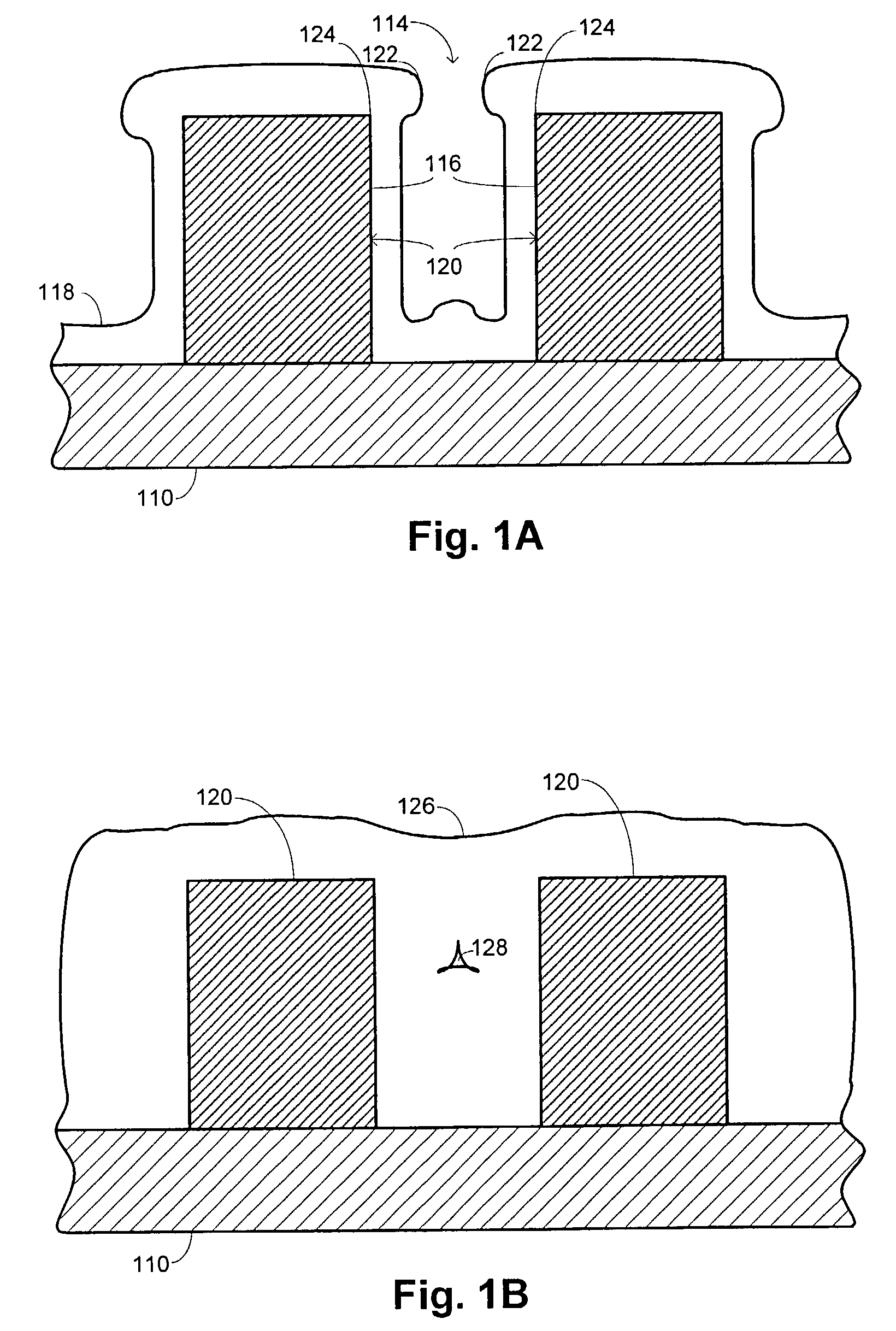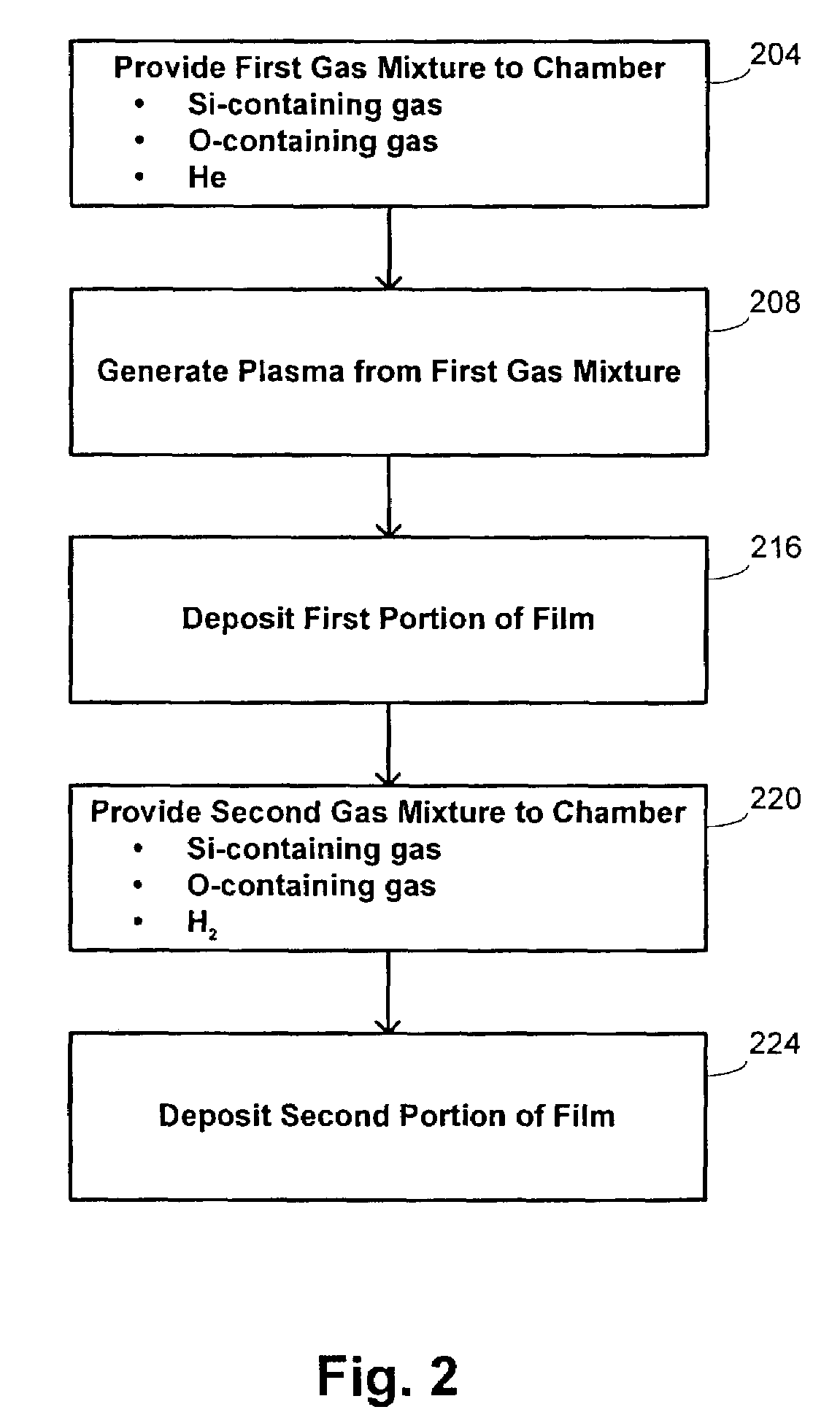HDP-CVD multistep gapfill process
a multi-step, gapfilling technology, applied in the direction of solid-state diffusion coating, fluid pressure measurement, chemical vapor deposition coating, etc., can solve the problems of increasing the aspect ratio, progressively more difficult to fill the gap without leaving voids, affecting the operation of the completed device, etc., to achieve the effect of reducing the average molecular weight and reducing the sputtering characteristics
- Summary
- Abstract
- Description
- Claims
- Application Information
AI Technical Summary
Benefits of technology
Problems solved by technology
Method used
Image
Examples
Embodiment Construction
1. Introduction
[0023]Embodiments of the invention are directed to methods and apparatus for depositing a film to fill a gap in a surface of a substrate. For gaps of a given width, these embodiments use a multistep deposition and etching process and exploit different sputtering characteristics of an HDP-CVD technique in different portions of the process. These different sputtering characteristics are achieved by the use of different fluent gases to provide the sputtering agent and also by adjusting flow rates of process gases to achieve different deposition-to-sputtering ratios. The combination of effects provided by the cycling of deposition and etching steps and by the variation in sputtering characteristics combine synergistically to permit substantially void-free filling of gaps having very high aspect ratios. In particular, the embodiments of the invention may be used for filling gaps in 100-nm technology (0.10 μm) and at least down to 65-nm technology (0.065 μm). The embodiment...
PUM
| Property | Measurement | Unit |
|---|---|---|
| wt. % | aaaaa | aaaaa |
| wt. % | aaaaa | aaaaa |
| temperature | aaaaa | aaaaa |
Abstract
Description
Claims
Application Information
 Login to View More
Login to View More - R&D
- Intellectual Property
- Life Sciences
- Materials
- Tech Scout
- Unparalleled Data Quality
- Higher Quality Content
- 60% Fewer Hallucinations
Browse by: Latest US Patents, China's latest patents, Technical Efficacy Thesaurus, Application Domain, Technology Topic, Popular Technical Reports.
© 2025 PatSnap. All rights reserved.Legal|Privacy policy|Modern Slavery Act Transparency Statement|Sitemap|About US| Contact US: help@patsnap.com



